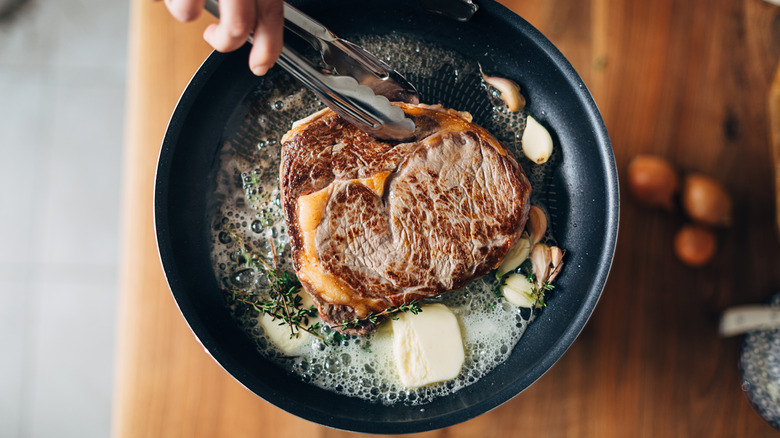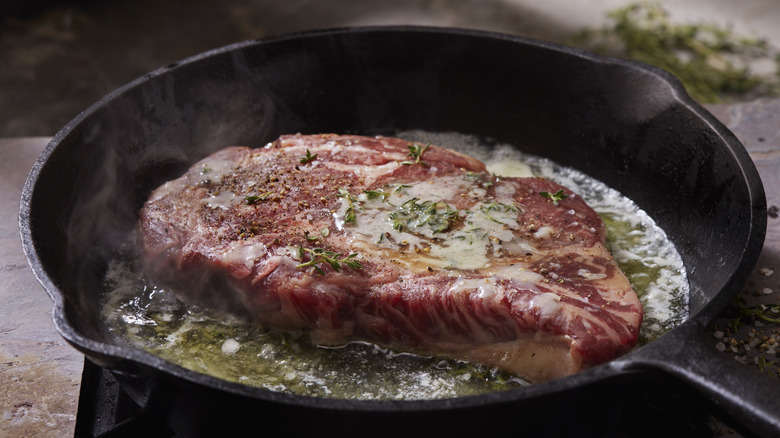Gordon Ramsay's Tilted Pan Technique For Better Seared Steak
Cooking a seared steak might seem simple at first glance: Just add a bit of butter to the pan, place a thick sirloin cut on it, sear until it's beautifully golden brown, and then it's ready to serve. But, as anyone who's tried their hand at pan-searing steak will attest, it's trickier than it appears. While it may not be as complex as making barbecue beef short ribs, it's certainly not foolproof.
Both professional chefs and home cooks can stumble over pan-seared steak mistakes that undermine the tastiness of their final product. Mistakes can include not salting the steak correctly, using the wrong type of pan (cast iron is the gold standard), or choosing a cut of steak that doesn't sear well. However, the devil is in the details, and even minor oversights can mean an uninspiring steak dinner. As Gordon Ramsay points out in his pan-seared steak tutorial, something as simple as failing to tilt the pan to let the steak baste in its own juices can lead to flavor loss!
Why you should tilt your pan when you cook
A quality steak is rich in fat and juices that are intricately woven within its marbling. As it cooks in the pan, this fat melts, creating a sizzling layer at the bottom that's brimming with flavor. This rendered fat is a treasure trove for enhancing your steak's taste.
Gordon Ramsay, like any skilled chef, knows the value of utilizing this flavorful fat to its fullest. He employs a simple technique that involves arranging the steak cuts along the pan's edge using a pair of tongs. He then tilts the pan, allowing the hot, flavor-packed fat to pool and come into contact with the sides of the steak, ensuring these areas also get a perfect sear. This method not only cooks the steak evenly but also infuses it with the deep, complex flavors from the rendered fat — and that's what sets a professional chef's steak apart from an amateur's!
Also tilt when you're basting!
Once your steak has achieved that perfect sear, it's time to kick its flavor into high gear by adding a knob of butter, some freshly pressed garlic, and a sprig of thyme into the pan. These ingredients meld with the fat and olive oil, creating a golden, aromatic liquid that's brimming with flavor and fragrance.
Once again, you don't want to let it all go to waste by leaving it to cook the bottom of the steak. Tilt the pan for a second time, gathering all that delightful liquid to one side. Then, with a spoon, gently baste the top of the steak with this mixture. Just like before, you'll be able to soak the steak with all the flavorful and aromatic essences that the baste has to offer. Plus, you don't have to flip the steak manually if you do this, so there are no grease splashes to deal with.


